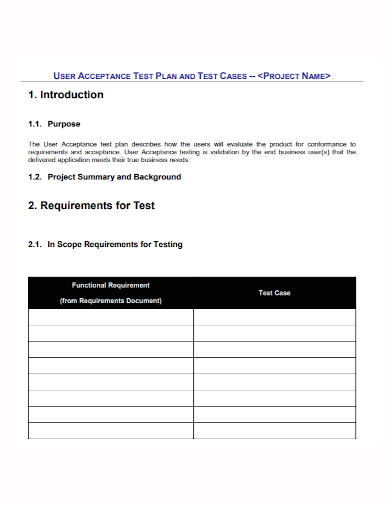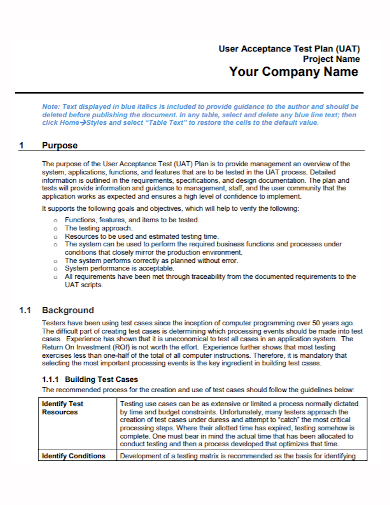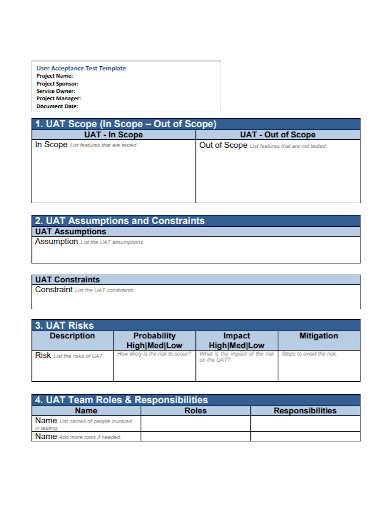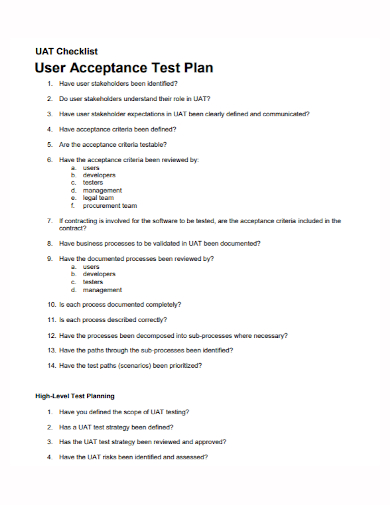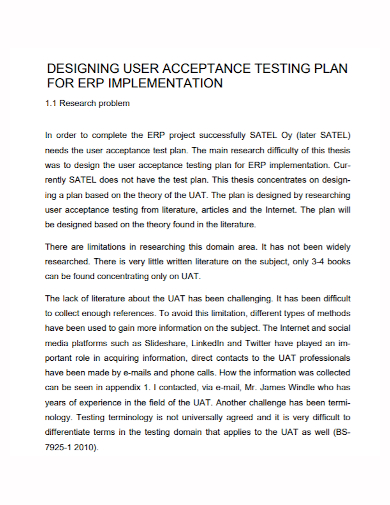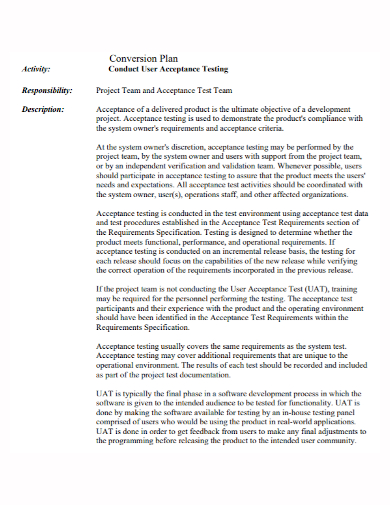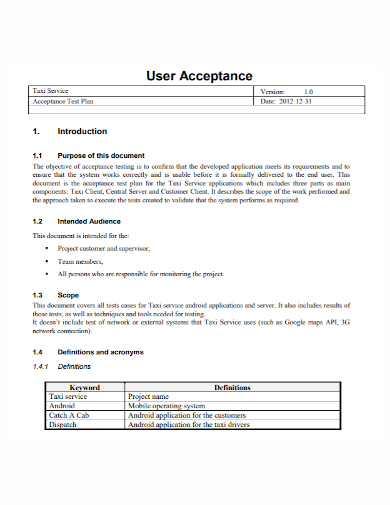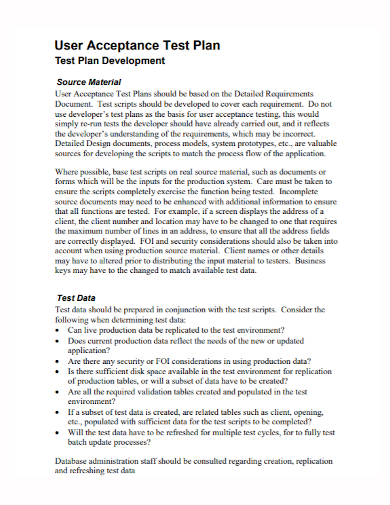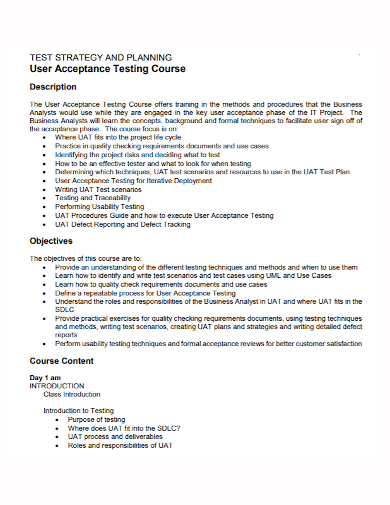If you’re planning to release new software, performing proper User Acceptance Testing, also known as UAT, is critical to its success. UAT allows testers to gain a realistic understanding of how the software works and performs in real-world scenarios. Although UAT testing appears to be simple, it involves a lot of moving parts. To properly perform a UAT procedure, the testers must first understand the conditions they want to monitor, test, and control. This is where a well-thought-out UAT test strategy is required.
10+ User Acceptance Test Plan Samples
UAT is a type of final-stage software testing used by developers to ensure that their product is market-ready. The client, or end-user, performs UAT on the developed software to see how it performs in real-world scenarios. While UAT is a test procedure, it also serves as a first run of the software prior to its release. It is not the goal of UAT to find minor details such as misspelled words or cosmetic flaws. The true goal of this procedure is to verify the software’s end-to-end flow and experience. It’s a test to see if the product can do exactly what it’s supposed to do.
1. User Acceptance Test Plan Template

2. User Project Acceptance Test Plan
3. Company User Acceptance Test Plan
4. User Acceptance Test Plan
5. User Acceptance Test Plan Checklist
6. Management User Acceptance Test Plan
7. User Acceptance Implementation Test Plan
8. Activity User Acceptance Test Plan
9. User Acceptance Service Test Plan
10. User Acceptance Development Test Plan
11. User Acceptance Test Strategy Plan
Software developers may be excellent at what they do, but they lack the client’s specialized product knowledge. This is why the client or end-user performs UAT. On a technical level, developers could check all the boxes, but the experience of how the software performs is what matters.
The client accepts the product and its design standards during user acceptance testing (UAT). This means it’s only done after all of the functional/system testings is finished. As a result, UAT is an important part of any software release.
Creating User Acceptance Test Plan
- Create signed-off requirements – The overall goal of UAT is to ensure that the product meets all of the client’s requirements. They must ensure that the software ticks all of their boxes because they are paying to have it developed. It will be easier to ensure that all of the client’s requirements are met if the test plan includes specific, signed-off, or approved requirements. This will then aid in the development of a successful UAT strategy.
- Reviewing test scenario by the user – While it is ideal for end-users or product owners to complete UAT testing, this is not always the case. Typically, they will hire UAT testers to complete the task for them. While this is useful, UAT testers are not the client, so they don’t have the same understanding of the software as the actual end-user. Specific business software has a lot of different aspects, and testers can’t always grasp every aspect of the business’s needs and environment.
- Ensure that codes are delivered on time – It doesn’t matter what kind of project the team is working on; delivering all of the code on time is critical. Developers must ensure that all code passes unit testing and is free of functional defects before the UAT testers begin their work. This can be a significant challenge for any project, but it will be critical during the testing phase.
- Use the right tools – One of the most effective ways to make the test plan run more smoothly is to use tools. Having a proper plan repository will help you save hundreds of hours of work. Not only will good tooling help to streamline the process, but it will also help to improve the results. There are numerous types of repositories from which to choose when creating a test plan. Make sure you find tooling that can be integrated into UAT and that you know how to use it properly.
- Set the criteria – Setting strict entry and exit criteria is an important part of this process. This is related to the previous point about getting all of the code delivered on time. When the project is handed over for testing, everyone on the team must understand exactly what the minimum criteria will be, as well as what will be required during the testing stage.
- Document everything – This one may seem self-evident, but it is frequently overlooked. It is critical to properly document the entire process when performing a UAT test plan. It’s pointless to conduct a User Acceptance Test if the process isn’t well documented.
FAQs
What is the purpose of user acceptance testing?
The primary goal of UAT is to verify the end-to-end business process. It is not concerned with cosmetic flaws, misspellings, or system testing. User Acceptance Testing is performed in a separate testing environment with data that is similar to that used in production. Two or more end-users will be involved in this type of black-box testing.
Who will be involved in the testing phase?
Certain employees and project members will be involved in the project phase, while different people will be involved in the testing phase. This could be a group of specialized testers, a client, or a real-life end-user. Ensure that everyone involved in the process understands the UAT test plan, goals, and criteria.
User Acceptance Testing is an essential component of the software development process. A proper test plan must be in place to accomplish this efficiently. There are numerous factors to consider during this process, all of which must be handled smoothly in order to achieve the best results.
Related Posts
FREE 7+ Fashion Business Plan Samples in PDF
FREE 10+ Sprint Planning Samples In MS Word | Google Docs | PDF
FREE 10+ Wedding Planning Samples in MS Word | Apple Pages | Powerpoint | PDF
FREE 9+ Monthly Study Planner Samples in PSD | Illustrator | InDesign | PDF
FREE 9+ Sample Curriculum Planning Templates in PDF | MS Word
FREE 10+ Teacher Development Plan Samples in MS Word | Google Docs | Apple Pages | PDF
FREE 10+ Basketball Practice Plan Samples in PDF
FREE 12+ School Business Plan Samples in PDF | MS Word | Apple Pages | Google Docs
FREE 7+ Client Strategic Plan Samples in PDF | MS Word
FREE 11+ Trucking Business Plan Templates in PDF | MS Word | Google Docs | Pages
FREE 7+ Small Hotel Business Plan Samples PDF | MS Word | Apple Pages | Google Docs
FREE 14+ Bakery Business Plans in MS Word | PDF | Google Docs | Pages
FREE 4+ Yearly Lesson Plan Samples in PDF
FREE 50+ Strategic Planning Samples in Google Docs | Pages | PDF | MS Word
FREE 10+ Construction Project Plan Samples in MS Word | Google Docs | Apple Pages | PDF

